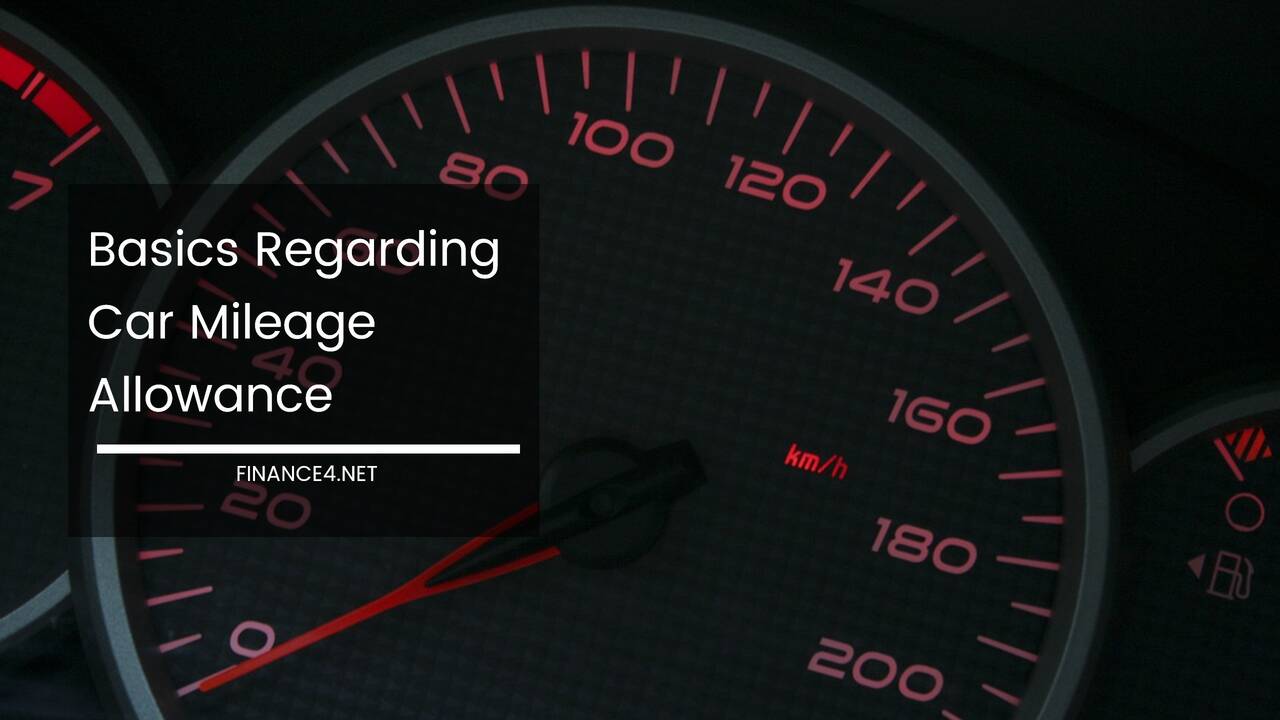Maximize Tax Savings: The Ultimate Guide to Car Mileage Allowances

Maximizing Tax Benefits: A Comprehensive Guide to Car Mileage Allowances for Business Travel
The Business Traveler’s Guide to Car Mileage Allowances
The world of business often involves a significant amount of travel for meetings, client visits, conferences, and other professional endeavors.
When employees use their personal vehicles for these business trips, they can take advantage of car mileage allowances to offset the associated costs.
This guide delves into the intricacies of car mileage allowances, explores the tax implications for both employers and employees, and highlights the importance of meticulous record-keeping to maximize these benefits.
Understanding Car Mileage Allowances: Reimbursement and Tax Advantages
Car mileage allowances are essentially reimbursements for travel expenses incurred during business journeys. These reimbursements are considered tax-deductible for employers, provided they adhere to specific criteria set by the tax authorities (e.g., Internal Revenue Service (IRS) in the US).
For employees, the benefit lies in receiving compensation for their travel expenses while potentially reducing their tax burden.
This occurs when the employer’s mileage allowance payment falls below the maximum allowable rate per mile established by the tax agency. Additionally, some countries may allow tax-exempt subsistence rates to cover other travel expenses like meals and lodging.
Employee Entitlement: Seeking Tax Relief When Allowances Fall Short
An important aspect of car mileage allowances is the employee’s right to claim tax relief if their employer’s allowance doesn’t cover the full cost of business travel.
In such cases, employees can claim the difference between the allowance received and the maximum tax-free amount the employer could have reimbursed them based on the official mileage rate.
This ensures that employees are not penalized for using their personal vehicles for business purposes.
Record-Keeping: The Cornerstone of Maximizing Tax Benefits
For both employers and employees, meticulous record-keeping is essential for maximizing the benefits of car mileage allowances. This ensures compliance with tax regulations and facilitates the substantiation of claims during tax assessments.
Employees: Employees should maintain detailed records that include:
- Total mileage driven for business purposes
- Dates of all business trips
- Specific breakdown of business mileage vs. personal mileage
- Receipts for any business-related fuel purchases (if using a company car)
Employers: Employers should keep track of:
- Mileage allowances paid to employees
- Details of employee business trips (if applicable)
- Documentation supporting the business purpose of employee travel (e.g., meeting agendas, client invoices)
This disciplined approach to record-keeping not only streamlines the tax filing process but also provides a safety net in case of an audit.
Understanding Caps on Relief: Staying Within Allowable Limits
While tax relief is an attractive prospect, it’s crucial to understand that relief is typically not granted for actual expenditures exceeding the maximum allowable rate per mile set by the tax authority.
For example, if the IRS sets the standard mileage rate at 67 cents per mile for 2024, and an employee spends 70 cents per mile on business travel, they can only claim tax relief for the 67 cents authorized by the IRS.
Exceeding these caps can reduce or eliminate potential tax benefits. Therefore, it’s essential for employees to monitor their business travel expenses and ensure they stay within the permissible limits.
Beyond Standard Rates: Inland Revenue Mileage Rates and Variations
Tax authorities in many countries establish standard mileage rates to simplify the calculation of car mileage allowances.
Understanding these rates is crucial for both employers and employees. Here’s a breakdown using a hypothetical example:
Example: Let’s assume the current tax year is 2024, and the relevant tax authority is the Inland Revenue (UK).
- Standard Mileage Rate: As of April 2024, the Inland Revenue mileage rate for the first 10,000 business miles driven is 45 pence per mile.
- Reduced Rate: For miles exceeding 10,000, the rate decreases to 25 pence per mile.
- Multi-occupancy Incentive: The Inland Revenue offers a higher rate of 50 pence per mile when multiple employees travel together in the same vehicle for business purposes. This acknowledges the shared nature of the travel and provides an incentive for carpooling.
Alternative Modes of Transportation: Bicycle Mileage Rates
For environmentally conscious individuals who choose bicycles for business travel, the Inland Revenue (or relevant tax authority) typically offers a separate mileage rate.
For instance, the Inland Revenue sets the bicycle mileage rate at 20 pence per mile, mirroring the structure of car allowances and requiring similar record-keeping practices.
Eligibility for Car Mileage Allowances: Personal vs. Company Vehicles
The eligibility for car mileage allowances extends to both personal and company vehicles used for business purposes.
The key factor is the employer’s reimbursement rate in relation to the official mileage rate set by the tax authority. Here’s a breakdown of the scenarios:
- Personal Vehicle Used for Business: If an employee utilizes their personal vehicle for business travel and the employer’s mileage allowance falls below the approved rate, the difference becomes taxable income for the employee.
- Company Vehicle Used for Business: When a company provides a vehicle for business use, the employee typically doesn’t receive a mileage allowance. However, depending on the tax regulations, personal use of the company car may be subject to fringe benefits taxation.
- Self-Employed Individuals: Similar principles apply to self-employed individuals who use their personal vehicles for business. They can deduct car expenses on their tax return up to the standard mileage rate, even if they don’t receive a reimbursement from an employer.
It’s crucial for both employees and self-employed individuals to be aware of these criteria to ensure compliance with tax regulations and optimize their tax benefits.
Fuel Costs and Tax Implications: Company Cars vs. Personal Cars
The issue of fuel costs adds another layer of complexity to car mileage allowances. Here’s a breakdown of the scenarios:
- Company Car: If an employee uses a company car for business travel and pays for fuel out of pocket, they may be eligible for tax relief on those fuel expenses, provided the costs are lower than the employer’s standard fuel allowance (if offered). This emphasizes the importance of keeping detailed records of business mileage and fuel purchases for employees using company vehicles.
- Personal Car: When using a personal vehicle for business, employees cannot deduct fuel costs directly from their taxes. However, the standard mileage rate set by the tax authority is intended to encompass the total cost of operating a vehicle, including fuel, depreciation, maintenance, and insurance.
Understanding these nuances helps both employers and employees determine how fuel costs factor into car mileage allowances and record-keeping practices.
Beyond Basic Allowances: Additional Considerations
Car mileage allowances are a valuable tool for both employers and employees, but there are additional factors to consider for a comprehensive understanding:
- Commuting vs. Business Travel: It’s important to distinguish between commuting to a regular workplace and travel for specific business purposes. Mileage allowances typically only apply to the latter.
- Parking and Tolls: While car mileage allowances generally cover the basic cost of operating a vehicle, some tax authorities allow for separate deductions for business-related parking fees and tolls.
- Electric Vehicles (EVs) and Green Initiatives: Some countries offer increased mileage rates or tax incentives for using EVs for business travel to promote environmentally friendly practices.
- Foreign Travel: Tax regulations for car mileage allowances may differ when traveling internationally for business. Consulting with a tax advisor may be necessary to ensure compliance.
Employer Considerations: Streamlining Processes and Minimizing Liabilities
Employers can take proactive steps to streamline the car mileage allowance process and minimize potential liabilities:
- Develop a Clear Policy: Establish a clear and well-defined car mileage allowance policy outlining eligibility, reimbursement rates, record-keeping requirements, and the distinction between business and personal travel.
- Automate Reimbursements: Consider leveraging accounting software or payroll systems to automate mileage allowance calculations and reimbursements, improving efficiency and reducing errors.
- Regular Reviews: Periodically review the car mileage allowance policy and update it to reflect any changes in tax regulations or business needs.
- Employee Training: Educate employees on the car mileage allowance policy, record-keeping best practices, and the difference between business and personal travel to ensure compliance.
Final Thoughts: Maximizing Benefits Through Knowledge and Diligence
Navigating the intricate landscape of car mileage allowances requires a nuanced understanding of regulations, eligibility criteria, and diligent record-keeping.
By adhering to established guidelines and maintaining meticulous records, employees can significantly reduce their tax burden and offset the financial costs associated with business travel.
Employers, by implementing well-defined policies and leveraging technology, can streamline the process while minimizing potential liabilities.
This comprehensive guide aims to equip both employers and employees with the knowledge needed to navigate car mileage allowances effectively. By maximizing these benefits, individuals can contribute to a more cost-effective and efficient business travel experience.



